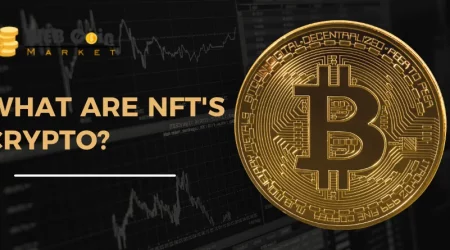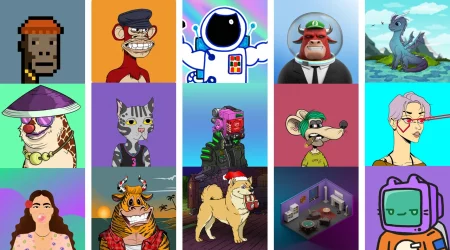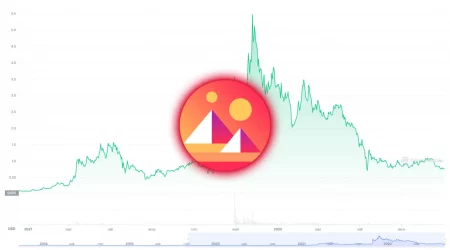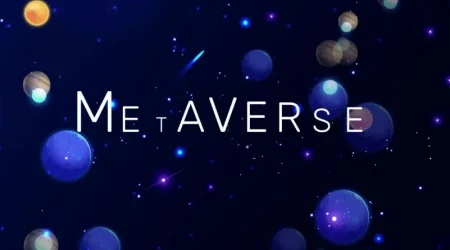What are the roles of NFT in the metaverse?
Table of Contents
The Roles of NFT in the Metaverse
In the NFT metaverse, NFTs serve as digital assets with programmed scarcity. They provide a platform for collectible trade, facilitate a transparent and accessible economy, and provide piracy resistance. This article outlines the role of NFTs in the metaverse. It also explains why NFTs may not be a good solution for every game. But they may help.
Among NFT’s various initiatives, the community is working to improve metaverse users’ communal, social, and personal experiences. This is done by generating NFT assets, which can convey appreciation or opinions on a project. Furthermore, communities of NFTs can form to share opinions and experiences about an NFT. As a result, NFTs can play essential roles in the metaverse.
NFTs allow you to own avatars, digital apparel, and land in the metaverse. You can also migrate between platforms and trade NFTs. An NFT-powered metaverse is an excellent place to start. The benefits of NFTs are many, including their transparency and immutability. NFTs are also highly valuable due to their scarcity. However, they are not a substitute for real-world currencies.
Non-Fungible Tokens (NFTs)
Non-Fungible Tokens (or NFTs) are digital representations of assets, such as art. These tokens are a niche market that caters to those who enjoy high-brow digital art. To them, the digital asset is worth as much as the original piece of art. They also have legal implications, such as resale royalties and trademark rights.
The NFTs used in these virtual worlds can have different attributes, such as unique qualities. They can also be used to own medieval war video game weapons or limited edition designer dresses. In the virtual world, you can earn NFTs and powers as you advance through the various levels of competition. This can also lead to a competitive advantage for your business.
A recent example of NFTs used in the metaverse is a video of a dunking Lebron James. In Q3 of 2021, it became the most traded NFT collection ever, with over $2.5 billion trading volume. This phenomenon could potentially be replicated throughout the virtual world. If you’re an NFT creator, it is vital to make sure you protect your intellectual property and keep it out of the hands of others.
Social gaming
The metaverse is an online world parallel to our real life. It includes various forms of human interaction such as communication, finance, games, personal profiles, and NFTs. These are accessed as quickly as the WWW and allow us to participate in virtual activities. For example, you can meet someone in a virtual arcade and spend the day exploring the arcade, praising each other’s clothes, and kissing.
Metaverses will incorporate video games, VR, and social media into their services. By leveraging blockchain technology, metaverses will expand the possibilities of real-world businesses to the virtual space. Furthermore, NFT ownership will enable players to participate in different social activities. Using their NFTs, players can create social groups to share experiences and produce material together. These social interactions are becoming increasingly crucial for the Web 3.0 movement.
As the NFT metaverse grows, so too does the gaming guild industry. With the advent of blockchain-based virtual worlds, players can connect with other gamers in the game and play together while earning rewards. By creating a processing guild, players can earn money in the game while focusing on essential tasks. Another option is to build a thriving city on a barren piece of land. Once you’ve figured out how to turn those resources into real-world cash, you can sell them in the NFT marketplace.
Read More: Are NFTs Better Than the Metaverse Crypto Coin?
Free And Transparent Economy
An NFT represents a virtual plot of land, enabling transactions in digital real estate. Because space in the metaverse is limited, a virtual plot of land must be limited, too. Decentraland, for example, has over 90000 individual parcels, each measuring 50 square feet. While digital scarcity has been explored concerning cryptocurrency, NFTs are similar to the same principle.
Prototype next-generation metaverses show the beginnings of a decent society, with individuals settling the land, exchanging goods, and asserting their ownership rights. But just like any society, a metaverse requires a functioning economy. Authentication of digital properties and free trade is vital to the functioning of any metaverse economy. NFTs are an example of such a metaverse economy.
The rise of cryptocurrency in the metaverse is a fascinating development. It could become the primary form of financial exchange in just a few years, and more than two hundred cryptocurrencies are currently in the market. In a way, a metaverse is a form of the Internet. As a result, it presents a unique opportunity for investors to trade and invest in cryptocurrency. However, it is essential to understand that cryptocurrency is not yet a mainstream product, and this fact should be considered before making an investment decision.
NFTs are digital assets with programmed scarcity.
NFTs are digital assets created for scarcity via programming. They can be used to track virtual assets like play-to-earn games, apparel, created content, and plots of land. The key to monetizing these assets is to develop a secondary market and derivative work plan. These currencies are still developing, so they may not be widely available yet. However, they will continue to grow in popularity as the metaverse expands.
NFTs allow you to own avatars, digital apparel, and land in the metaverse. You can also migrate between platforms and trade NFTs. An NFT-powered metaverse is an excellent place to start. The benefits of NFTs are many, including their transparency and immutability. NFTs are also highly valuable due to their scarcity. However, they are not a substitute for real-world currencies.
Blockchain and the NFT are promising technologies to help end piracy in the metaverse. But the question is will these technologies provide enough protection to prevent piracy? There are many potential uses for these technologies, and some argue that they may even help businesses gain an edge over the competition. Here are three examples. One example concerns the creation of play-to-win games. Another is the ability to create items and characters based on NFT.
The rise of NFTs has prompted prominent music rights-holders to take steps to protect their intellectual property. The Digital Content Protection (DCP), a digital rights-holder organization, has launched a new service to protect copyright in the metaverse. However, it’s still early to say how NFTs will affect the future of the music industry. However, emerging technology is poised to change the way creators make and distribute their work.





Leave a Reply